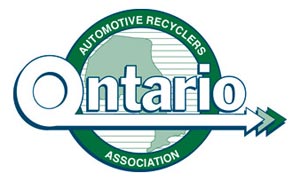by Andrew MacDonald, Maritime Auto PartsnnSAE WORLD CONGRESS 2015nnABSTRACT: Auto recycling in North America is a unique and dynamic industry. Over the past century it has been growing and refining its ability to identify, catalogue, ensure quality, and market used parts, as well as to ethically and environmentally recycle vehicles. There are full-service, self-service, and various other niches and blends of auto recyclers. The industry’s greatest challenge is how to ensure that all auto recycling facilities treat vehicles properly and have the access to information necessary to do so. This presentation aims to detail the current state of the auto recycling industry in North America, and the partnerships required to ensure its continuance, the protection of the environment, and the safety of drivers.nnVehicles are typically procured in two ways: ‘Economic total loss’ vehicles from insurance companies either through contracts or auctions, and ‘End-of-Live’ vehicles (ELVs) from OEM recalls, vehicle collection programs, and private purchase. The primary revenue centre of an auto recycler is used parts. Therefore, properly identifying OEM part numbers, dismantling, quality assurance, and safe handling and storage are key point processes. The availability of OEM build data is and will be paramount to the industry’s continued success. OEM build data will also be critical for the industry’s ability to ensure proper identification and quarantine of recall and safety critical parts as per OEM direction. Moreover, new technologies on the market such as HEV and EV powertrains require not only OEM partnership with repairers for safe handling, but also with auto recyclers for dismantling, storage and disposal of the components.nnAuto recycling is a key supplier to the remanufactured parts industry, as well as the metal refining industry. Ore from recycled vehicles is much more economical and environmentally friendly than mined products. Typical recycled metals from ELVs include steel, copper, aluminum, lead and rare earth metals.nnGovernment regulations and licences vary depending on the state/province and country. The depollution process of an ELV can vary greatly depending on these rules and regulations and their enforcement. By nature, auto recycling has fundamental environmental benefits. Between 80-90% of ELVs are reused or recycled. However, not all licensed facilities deal with the environmental by-products to the law, or to any certifiable standard. These facilities operate without the overhead of removing fluids, oils, gases and refrigerants appropriately. Auto recycling associations around the world are defining and certifying ‘Professional Auto Recyclers’ and promoting the ‘Green Recycled Parts’ brand for businesses that operate at a higher standard. Unlike North America, the EU Directive on ELV recycling sets clear targets for mandatory depollution, quantified targets for reuse, recycling and recovery of vehicles, and pushes OEMs to manufacture new vehicles with a view to their recyclability.nnPartnerships between Auto Recycling associations, OEMs, and state/provincial and federal governments are critical to ensuring that the auto recycling industry prevails in a way that is not only economically viable, but ensures protection of the environment, and ultimately the safety and satisfaction of the consumer.
